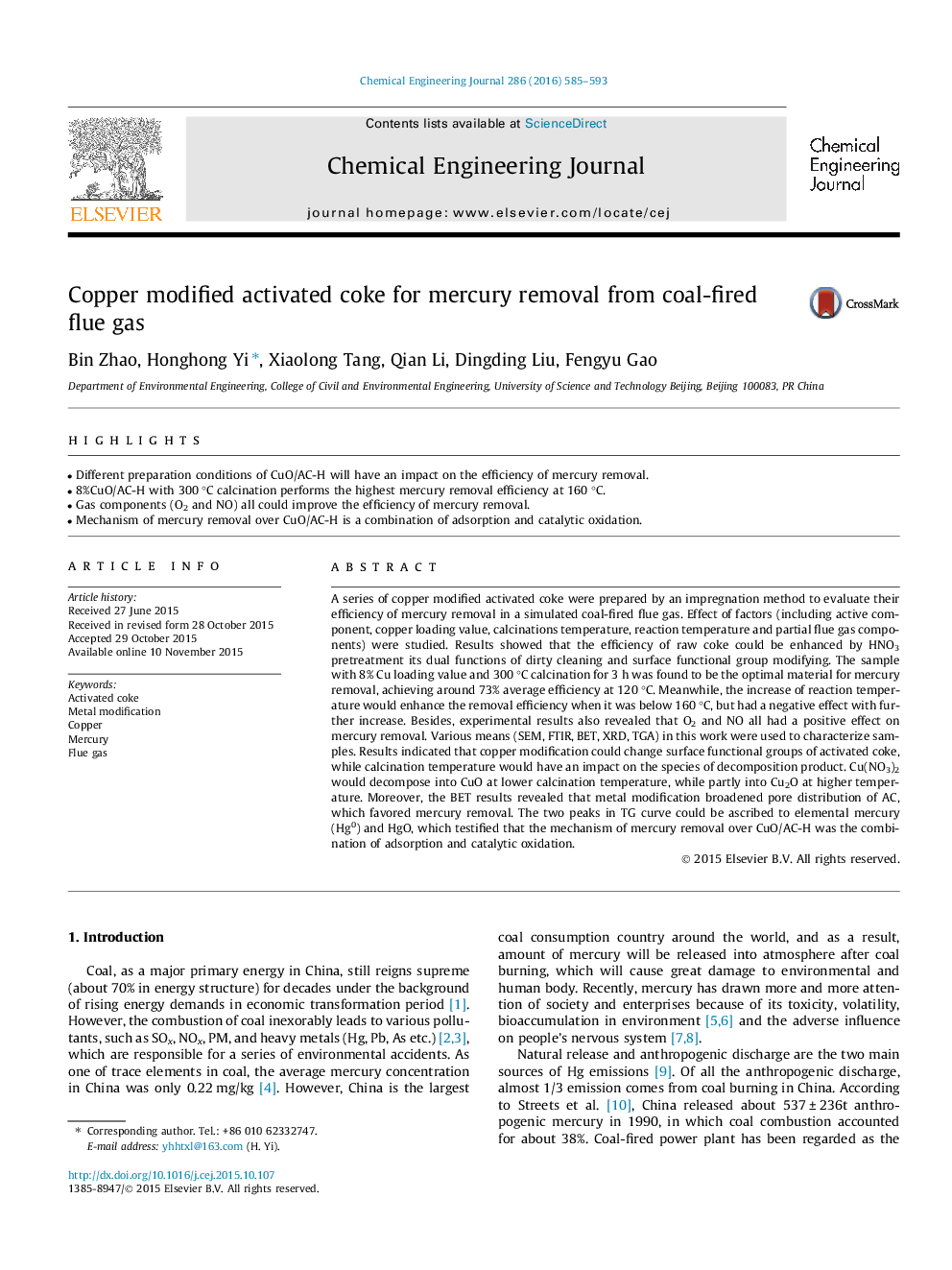| Article ID | Journal | Published Year | Pages | File Type |
|---|---|---|---|---|
| 6582813 | Chemical Engineering Journal | 2016 | 9 Pages |
Abstract
A series of copper modified activated coke were prepared by an impregnation method to evaluate their efficiency of mercury removal in a simulated coal-fired flue gas. Effect of factors (including active component, copper loading value, calcinations temperature, reaction temperature and partial flue gas components) were studied. Results showed that the efficiency of raw coke could be enhanced by HNO3 pretreatment its dual functions of dirty cleaning and surface functional group modifying. The sample with 8% Cu loading value and 300 °C calcination for 3 h was found to be the optimal material for mercury removal, achieving around 73% average efficiency at 120 °C. Meanwhile, the increase of reaction temperature would enhance the removal efficiency when it was below 160 °C, but had a negative effect with further increase. Besides, experimental results also revealed that O2 and NO all had a positive effect on mercury removal. Various means (SEM, FTIR, BET, XRD, TGA) in this work were used to characterize samples. Results indicated that copper modification could change surface functional groups of activated coke, while calcination temperature would have an impact on the species of decomposition product. Cu(NO3)2 would decompose into CuO at lower calcination temperature, while partly into Cu2O at higher temperature. Moreover, the BET results revealed that metal modification broadened pore distribution of AC, which favored mercury removal. The two peaks in TG curve could be ascribed to elemental mercury (Hg0) and HgO, which testified that the mechanism of mercury removal over CuO/AC-H was the combination of adsorption and catalytic oxidation.
Related Topics
Physical Sciences and Engineering
Chemical Engineering
Chemical Engineering (General)
Authors
Bin Zhao, Honghong Yi, Xiaolong Tang, Qian Li, Dingding Liu, Fengyu Gao,
